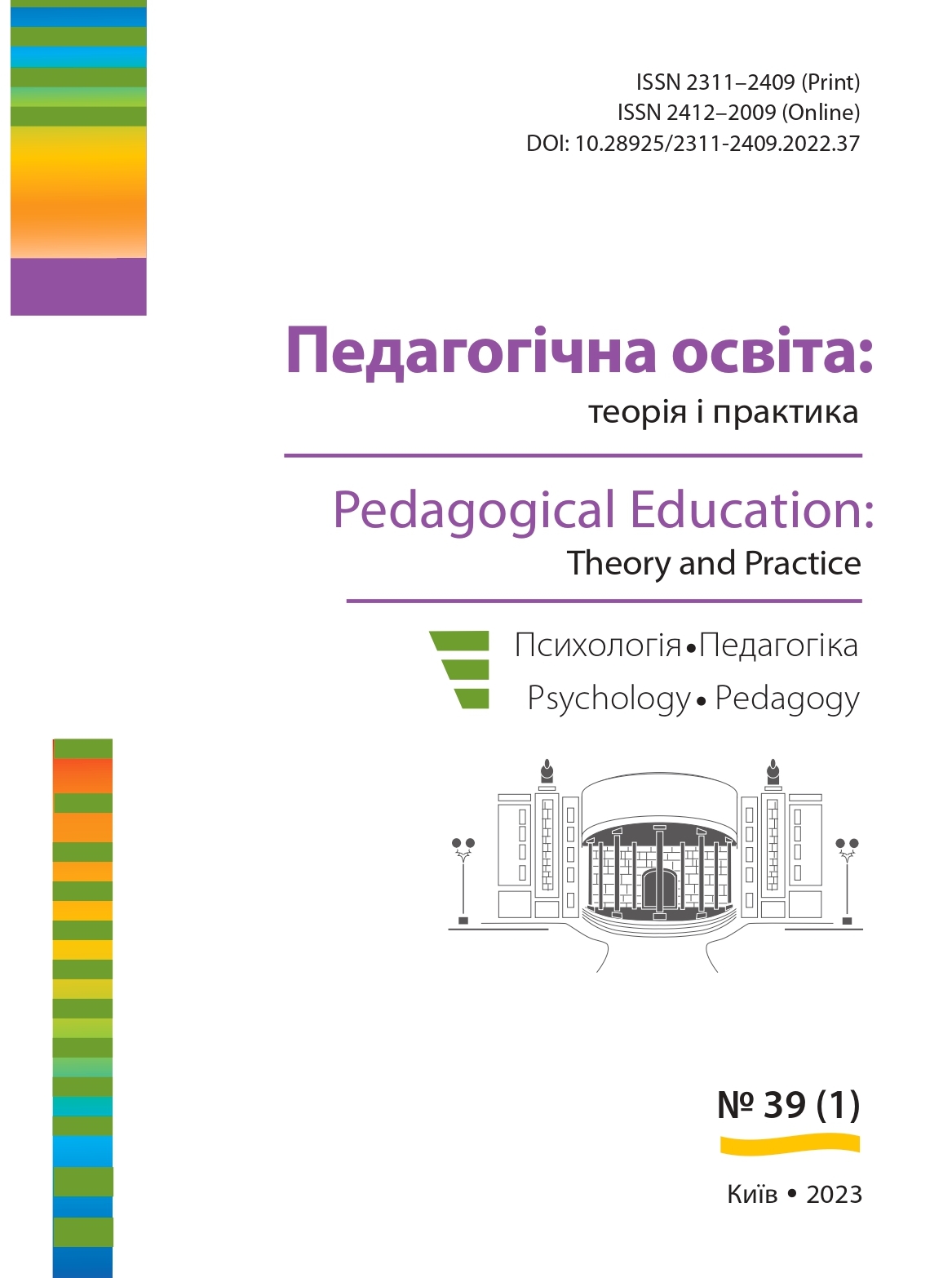Bilingual young learners “read” their picturebooks: a multidimensional research in Greece
DOI:
https://doi.org/10.28925/2311-2409.2023.395Abstract
In the current research, the reactions of young learners, who come from a migrant background, are
investigated in connection to their involvement with picturebooks. In order to accomplish this goal, a sample
group consisting of fifty children aged five years old who were L1 speakers in Albanian and Bulgarian
and were receiving their preprimary education in Greece was chosen to take part in this research study.
The children’s interactions with a picture book were watched by their instructors while it took place in front
of them in the classroom. The study put an emphasis on providing analytical replies relevant to the following
four major areas: a) Narrative Meaning; b) Illustrations; c) Context of Book Development; and d) Linguistic
Codes. According to the findings of the research, pupils take an active role in their interactions with picture
books. As a consequence of this, suggestions have been made for the conduct of more study and the use
of educational practices.
Downloads
References
REFERENCE
Arizpe, E. & Styles, M. (2003). Children Reading Pictures. Interpreting Visual Texts.Abingdon:
RoutledgeFalmer.
Bader B. (1976) American Picturebooks from Noah’s Ark to The Beast Within. New York: Macmillan.
p.
CollinsDictionary. URL: https://www.collinsdictionary.com/dictionary/english/picturebook (Date
of application: May 05, 2023).
Dunn O. (2003). REALpictureBOOKS — an additional experience in English. In S. Mourão (Ed.),
Current Practices: A Look at Teaching English to Children in Portugal. Book of Proceedings, APPI &
IATEFL 1st Young Learner Conference, Lisbon: APPI, P.106–ll4.
Ellis G., Brewster J. (2014) Tell it Again! The Storytelling Handbook for Primary Teachers (3rd ed.).
London: British Council. URL: http://www.teachingenglish.org.uk/article/tell-it-again-storytellinghandbook-
primaryenglish-language-teachers (Date of application: May 05, 2023).
European Commission (2017) Migrants in European schools: learning and maintaining languages /
Staring F., Day L., Meierkord A. Thematic report from a programme of expert workshops and peer learning
activities. Luxembourg: Publications Office of the European Union, 25 p. URL: http://publications.europa6.
eu/resource/cellar/c0683c22-25a8-11e8-ac73-01aa75ed71a1.0001.01/DOC_1 (Date of application: May
, 2023)
European Education and Culture Executive Agency, Eurydice (2023) Key data on teaching languages
at school in Europe — 2023 edition // Publications Office of the European Union, 2023, URL: https://data.
europa.eu/doi/10.2797/529032 (Date of application: May 05, 2023).
Ghosn I-K. (2013) Storybridge to second language literacy. The Theory, Research and Practice
of Teaching English with Children’s Literature, Charlotte, NC: Information Age Publishing. 231 p.
Kosahrna N., Petryk L. (2021) Organization of future primary school teachers’ professional practice
within the optional block «Foreign Language». Continuing professional education: theory and practice
(series: Pedagogical Sciences). ISSUE № 4 (69), 2021. P. 50-59. DOI: https://doi.org/10.28925/1609-
2021.4.6
Mourão S. (2016) Picturebooks in the primary EFL Classroom: Authentic Literature for an Authentic
Response. CLELE (Children’s Literature in English Language Education) Journal, Volume 4 (1). P. 25 — 43.
Nezhyva L., Palamar S., Marienko M. (2021) Clouds of words as a didactic tool in literary education
of primary school children CTE 2021: 9th Workshop on Cloud Technologies in Education, December 17,
, Kryvyi Rih, Ukraine. P. 381 — 393.
Palamar S., Nezhyva L. (2021) Features of the use of the word cloud in the linguistic and literary field
of primary education. Pedagogical Education: Theory and Practice. Psychology. Pedagogy. P. 54 — 61.
Papadopoulos I. (2020). From classroom translanguaging pedagogy to classroom pedagogy: Supporting
literacy, communication and cooperative creativity. Thessaloniki: Disigma Publications
Papadopoulou Sm. (2018a). Persuasion: the power of persuasion as a teaching tool for learning Greek
as a foreign language. European Journal of Foreign Language Teaching. 3 (2).
Picturebooks in European Primary English Language Teaching (2023) URL: https://www.
teachingenglish.org.uk/news-and-events/webinars/webinars-teachers/picturebooks-european-primaryenglish-
language-teaching (Date of application: May 05, 2023).
Rudnik Y. (2023) The use of Augmented Reality and Virtual Reality Technologies in Teaching Foreign
Languages. Educological discourse. Issue 1(40). P.165 — 183. https://doi.org/10.28925/2312-5829.2023.110
Shulevitz U. (1985). Writing with pictures: How to write and illustrate children’s books. New York:
Watson-Guptill Publications. 271 p.
Yilmaz S., Yükse M., Canel A.N. (2015) Investigating Preschool Children’s Perceptions of the Concepts
of “Good” and “Bad” through the Method of Picture Analysis

